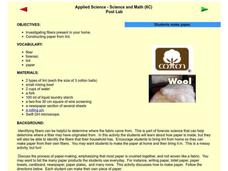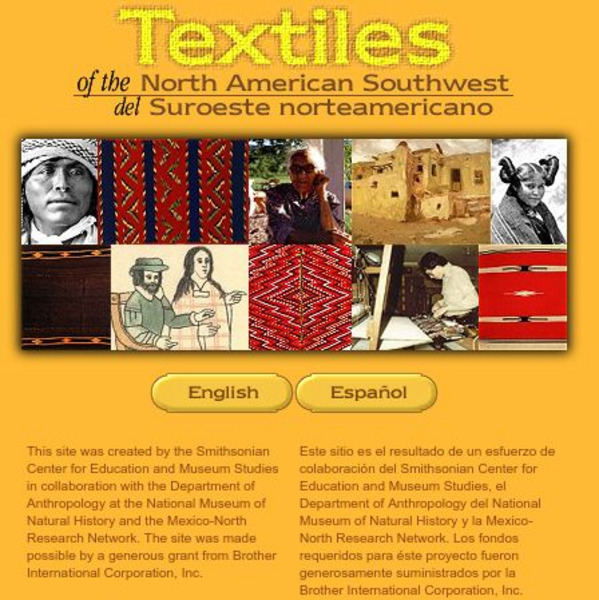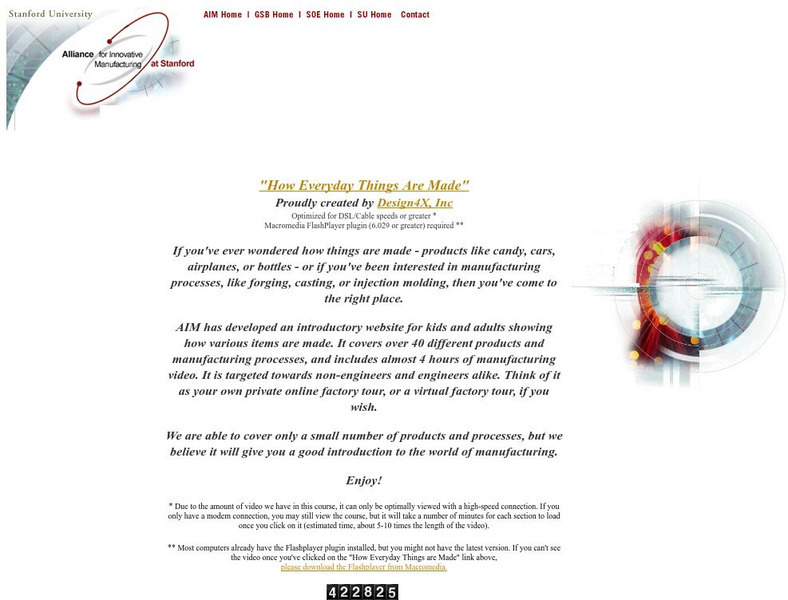Global Oneness Project
Rethinking the Fabrics We Wear
What are fibersheds and what what do they have to do with environmental protections? A photo essay and audio recordings about Mimi Luebbermann, and her sheep, cause consumers to reflect on how their clothing choices can support local...
Curated OER
It's Natural!
Here's a nicely designed learning exercise that will allow your young scientists to learn about common materials and products that come from nature. They also looks at synthesized products that come from a factory. This simple matching...
Curated OER
Clothes on the Grow
Can you grow clothes? Sure, wool, cotton, and Angora are all natural resources used to make textile products. Learners investigate the differences between synthetic and natural fibers, then consider textile processing careers. They watch...
Curated OER
Fabrics and Polymers
Students explore natural resources by reading a science story in class. In this fibers lesson, students identify and discuss the differences between fibers such as wool, silk, rayon, linen and cotton. Students identify the common uses of...
Curated OER
Applied Science - Science and Math Post Lab
Students construct paper. In this applied Science lesson, students create paper using lint. Students investigate the different fibers in their homes.
Curated OER
Clothesline Sleuth
Sixth graders investigate the origins of clothing production. In this Social Studies lesson, 6th graders examine the components of agriculture involved in making clothes. Students research cotton.
Curated OER
Cloze Activity: Wool
In this wool cloze procedure worksheet, students review a brief selection that is missing 12 words and then attempt to fill in each blank with a word they think the author might have used. A word bank is provided.
Curated OER
Want to Save a Sheep This Season?
Students investigate facts about sheep. They watch a video about the sheep industry. Students research practices in the wool industry. They discuss alternatives to wool. Students participate in humane education activities.
Curated OER
Rhythm-Music
First graders identify and keep a steady beat by playing instruments and playing the game stated in the lesson plan. Then they use what they know about rhythm and apply it to the use of instruments. Students also perform on instruments,...
Smithsonian Institution
Smithsonian: Textiles of the North American Southwest
This site explores the weaving traditions of the Native American and Hispanic peoples of northern Mexico and the southwestern United States. A gallery of artifacts, timeline, map glossary, and textual descriptions are included. This is a...
Read Works
Read Works: Shearing Shrek
[Free Registration/Login Required] An informational text about Shrek, a wild sheep that provided sixty pounds of wool with one shearing. A question sheet is available to help students build skills in reading comprehension.
Stanford University
Stanford University: How Everyday Things Are Made
If you've ever wondered how things are made - products like candy, cars, airplanes, or bottles - or if you've been interested in manufacturing processes, like forging, casting, or injection molding, then you've come to the right place....
Other
Fabrics: Fabric Information and Facts: Wool
This resource presents information about the production of wool, the various types of wool, and a glossary of wool fabrics and weaves.
Other
Kiddyhouse.com: All About Sheep for Kids
This site provides lots of facts about sheep and their history, life span, importance, etc. Discusses various breeds of sheep and shows how sheep are sheared. Recommends some books on sheep as well.
Other
Kiddyhouse.com: All About Sheep for Kids
This site provides lots of facts about sheep and their history, life span, importance, etc. Discusses various breeds of sheep and shows how sheep are sheared. Recommends some books on sheep as well.

















